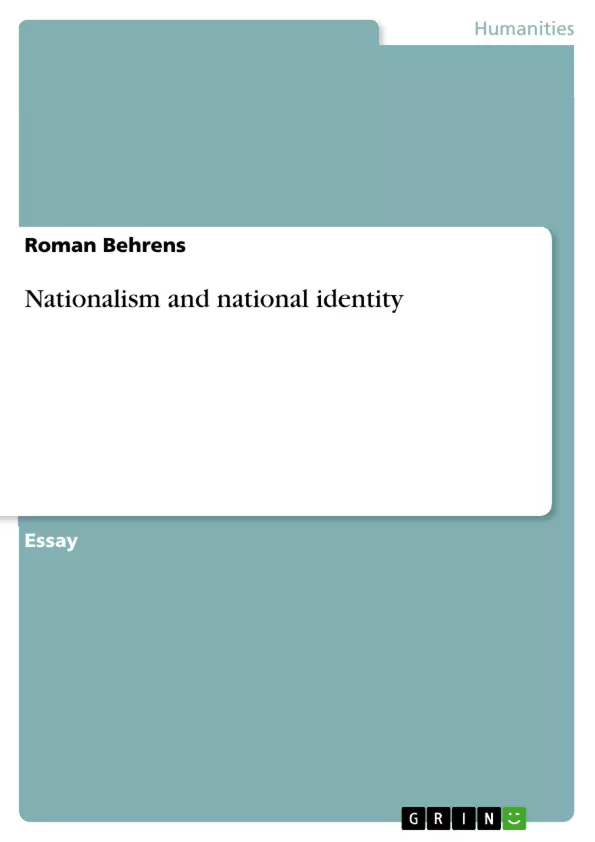“What is nationalism? It is a kind of patriotism that has lost its gentility!” These remarkable
words from Albert Schweitzer represent an opinion that is accepted by many people in this
world today. But when we speak about nationalism and national identity would not it be
interesting what is behind these tradition-rich words? What is the meaning of nationalism and
how has it changed in the last centuries? Another interesting point is how the people of today
would conceive their national identity, maybe in Sweden and Germany. Are there similarities
or even well-defined limits?
Inhaltsverzeichnis (Table of Contents)
- Nationalism and National Identity
- Defining Nationalism
- National Identity and its Pillars
- The Contemporary Landscape of Nationalism and National Identity
- Sweden: Society and Culture
- National Identity in Sweden: A Unique Perspective
- Language as a Tool for National Cohesion
- Germany: A Historical and Contemporary Look
- From Prussian Nationalism to Modern German Identity
- Symbols and Arenas of National Identity in Germany
Zielsetzung und Themenschwerpunkte (Objectives and Key Themes)
This essay aims to explore the concepts of nationalism and national identity, examining their historical development and contemporary manifestations. The essay specifically focuses on Sweden and Germany, comparing and contrasting their national identities.- Defining Nationalism and National Identity
- The Role of Symbols and Arenas in Shaping National Identity
- The Historical Evolution of Nationalism in Sweden and Germany
- The Contemporary Significance of Nationalism and National Identity
- The Impact of Cultural and Historical Factors on National Identity
Zusammenfassung der Kapitel (Chapter Summaries)
The essay first explores the definitions of nationalism and national identity, highlighting the significance of shared culture, history, and destiny in shaping national identity. It examines the role of symbols and tools, such as language, flags, and myths, in cultivating national consciousness. The essay then delves into the particular case of Sweden, showcasing the unique national identity rooted in nature conservation and the concept of "Allemannsrätt," emphasizing values of equality and collectivism. It analyzes the role of language as a tool for national cohesion, particularly in the context of the interwar years and the emergence of national broadcasting. Lastly, the essay delves into the historical and contemporary perspectives on nationalism and national identity in Germany, tracing its evolution from Prussian nationalism to modern German identity. It emphasizes the influence of historical events, symbols, and cultural factors in shaping German national identity and discusses the current understanding of nationalism in Germany.Schlüsselwörter (Keywords)
Nationalism, national identity, Sweden, Germany, culture, history, symbols, language, Allemannsrätt, equality, collectivism, Prussian nationalism, German identity, unity, freedom.
Excerpt out of 5 pages
- scroll top
- Quote paper
- Roman Behrens (Author), 2008, Nationalism and national identity, Munich, GRIN Verlag, https://www.grin.com/document/129796
Look inside the ebook



